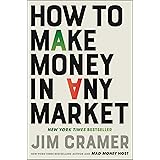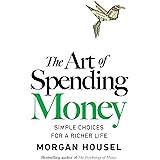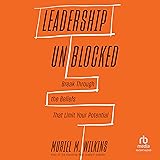Gold: An Unrivaled Asset for Understanding Global Economics and Personal Portfolios
Gold’s story is truly captivating, spanning millennia from ancient pharaohs to modern central banks and personal investment portfolios. As the video above eloquently explains, the sheer scarcity of gold – enough to cover a mere soccer field 1.5 meters high – only amplifies its enduring appeal and value. This precious metal continues to play a critical role in the global financial landscape, fascinating investors and economists alike with its unique characteristics.
Many investors, both new and seasoned, seek to understand why gold remains such a coveted asset. Its historical significance, combined with its distinct supply and demand dynamics, makes it a fascinating subject. Delving deeper into the world of gold investment reveals how a thoughtful allocation can significantly enhance your financial strategy and potentially transform your risk profile.
1. Gold’s Historical Significance: A Timeless Store of Value
From the dawn of civilization, gold has been recognized as a symbol of wealth, power, and stability. Ancient empires, including the Egyptians and Romans, treasured gold not just for its beauty but as a reliable store of value. Its natural rarity and resistance to corrosion made it an ideal medium for currency and a universal standard for trade across diverse cultures.
In more recent history, gold played a foundational role in global monetary systems, notably during the Bretton Woods agreement, which pegged the U.S. dollar to gold. Even after the system’s dissolution, central banks around the world have maintained significant gold reserves. This historical continuity underscores gold’s inherent trust and its position as a benchmark for economic stability.
2. The Unique Scarcity and Supply Dynamics of Gold
The video highlights a remarkable fact: there’s only enough gold ever mined to form a cube approximately 22 meters on each side, or cover a soccer field to a depth of 1.5 meters. This finite supply is a fundamental driver of its value. Unlike fiat currencies, which can be printed at will, gold production is a labor-intensive and capital-intensive process, making it inherently limited.
It is intriguing to note that a significant portion of the world’s gold, specifically two-thirds, has been mined since World War II. This surge in production was driven by several factors, including technological advancements in mining techniques, increased global demand for industrial applications, and the expansion of the global economy. Post-war reconstruction and rising prosperity in many nations spurred both industrial and investment demand for this precious metal, cementing its role in modern finance.
3. Why Central Banks Continue to Accumulate Gold
Central banks are key players in the gold market, and their buying habits often reveal underlying economic sentiments. The video touches upon why these institutions can’t seem to get enough gold. Their motivations are typically centered around diversification, hedging against currency fluctuations, and maintaining financial stability.
By holding gold, central banks reduce their reliance on any single currency, thereby diversifying their reserve assets. Gold acts as a stable asset, particularly during periods of geopolitical uncertainty or when major reserve currencies face inflationary pressures. This strategic accumulation by central banks serves as a strong indicator of gold’s perceived long-term value and its role as a hedge against global economic instability.
4. Key Drivers Influencing Gold Prices
Understanding the factors that influence gold prices is crucial for any investor. Gold’s price is not solely driven by supply and demand for physical metal, but by a complex interplay of various economic and geopolitical forces. These drivers can cause significant movements in the gold market, making it important to stay informed.
Primary drivers include interest rates, particularly real interest rates (nominal rates minus inflation). When real interest rates are low or negative, gold becomes more attractive as it doesn’t yield interest but holds its value. Inflation expectations also play a role; gold is often seen as an excellent hedge against rising inflation, as its purchasing power tends to be preserved. Geopolitical tensions, currency fluctuations (especially the U.S. dollar), and overall economic uncertainty also tend to boost demand for gold as a safe-haven asset, leading to price increases.
5. Integrating Gold into Your Investment Portfolio
For individuals looking to strengthen their financial standing, strategically adding gold to an investment portfolio can offer significant benefits. The video mentions that a tiny 5% allocation to gold could transform your risk profile, and this concept is well-supported by investment theory. Gold is often considered an uncorrelated asset, meaning its price movements typically do not move in tandem with stocks or bonds.
This lack of correlation makes gold an effective tool for portfolio diversification, helping to reduce overall portfolio volatility and enhance stability during market downturns. There are several ways to invest in gold, including buying physical gold (coins or bars), investing in gold exchange-traded funds (ETFs) which track gold prices, or purchasing shares in gold mining companies. Each method offers different levels of liquidity, risk, and convenience, allowing investors to choose what best fits their individual strategy for precious metal exposure.











